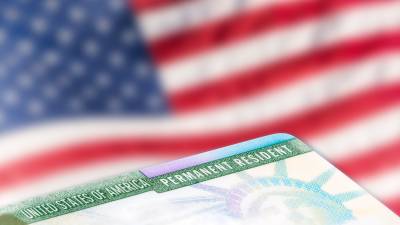Author: Jeff MacArthur
-

Fee Increase for Certain H-1B & L-1 Petitions: What You Need to Know
USCIS has recently created a webpage for understanding the fee increase for certain H-1B and L-1 petitions. You can visit that page here. Public Law 114-113 requires certain petitioners to pay an additional fee of $4,000 for certain H-1B petitions and to pay an additional fee of $4,500 for certain L-1A and L-1B petitions. Signed […]Read More -

Peace Bridge Recap for May
May was a very busy month for Berardi Immigration Law. We met a total of 23 clients at the Peace Bridge to present TN and L-1 petitions to U.S. Customs and Border Protection (CBP). We also had several complex cases regarding admissibility issues. Below is a recap of two interesting matters we advised upon this month. • Immigration […]Read More -

What You Need to Know About the New STEM OPT Regulations
As of May 10, 2016, all new STEM applications and all currently pending petitions will be processed under the new STEM OPT regulations, which extend STEM OPT to 24 months and include new employer requirements. Employers will be required to demonstrate sufficient resources to train employees and show they are not replacing U.S. workers. Eligible […]Read More -

Employee Spotlight: Associate Attorney Angela Schnell
Angela Schnell is an Associate Attorney at Berardi Immigration Law. Angela advises clients in numerous aspects of immigration law, including non-immigrant visas, family and employment-based green cards, criminal waivers and NAFTA matters. Angela also regularly represents our clients at the Peace Bridge port-of-entry to present their cases to U.S. Customs and Border Protection (“CBP”). “I […]Read More -

U.S. LPRs Must Now Have an eTA When Flying to Canada
The Electronic Travel Authorization (eTA) is a new Canadian entry requirement for visa-exempt foreign nationals traveling to Canada by air. U.S. permanent residents must have an eTA when flying to or transiting through Canada. This requirement began on March 15, 2016. An eTA is not required when entering by land or sea. However, between March […]Read More -

Citizenship Through Parents: An Overview
The United States allows for children to acquire U.S. citizenship other than through birth in the United States. Persons who were born outside of the United States to a U.S. citizen parent or parents may acquire or derive U.S. citizenship at birth. Persons may also acquire citizenship after birth, but before the age of 18, […]Read More -

The Important Role H-1B Workers Play in the U.S. Economy
Contrary to popular opinion, research shows that H-1B workers complement U.S. workers, fill employment gaps and expand job opportunities for all. Foreign workers fill a critical need in the U.S. labor market, especially in the fields of Science, Technology, Engineering and Math (STEM). The idea that native-born workers compete against foreign-born workers for a fixed […]Read More -

Immigration Relief for Those Affected by Severe Earthquakes
USCIS offers immigration relief measures for people who have been affected by a natural disaster, such as the severe earthquakes that recently occurred in Ecuador, Japan and Burma. To seek relief because of a natural disaster, you must still file any regularly required USCIS form(s) for your specific request, and then explain how the natural […]Read More -

April 2016 Peace Bridge Recap
During the month of April, Berardi Immigration Law presented twenty-two applications for TN/L-1 nonimmigrant status to Customs & Border Protection on behalf of our clients. This month, most of our clients were submitting petitions for L-1A or L-1B status, but a few clients presented applications for TN status as Attorneys, Computer Systems Analysts, and Management […]Read More -

Commuter Lawful Permanent Resident Cards
What is Commuter LPR Status? Regulations now allow a Lawful Permanent Resident (“LPR”) to take up or continue to reside in a foreign territory, such as Canada or Mexico, and commute to his or her place of employment in the U.S. as a special immigrant. Commuter LPRs typically live in Canada or Mexico, but commute […]Read More

